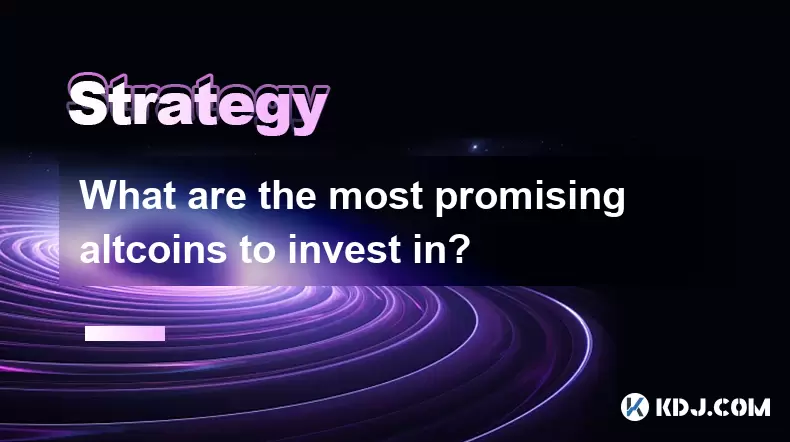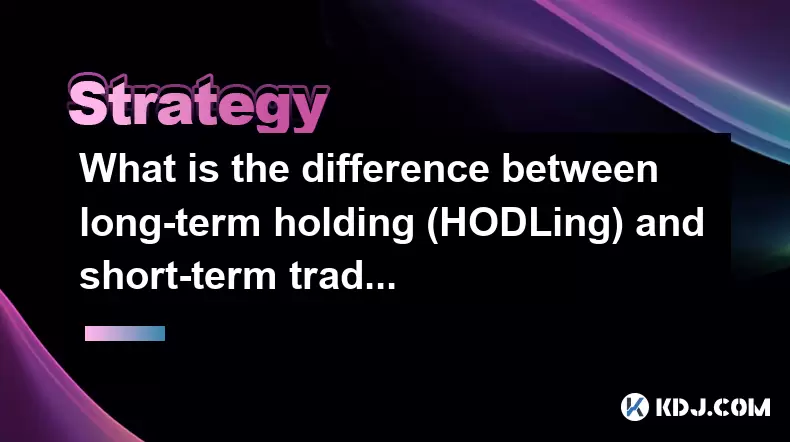-
 Bitcoin
Bitcoin $118300
-0.25% -
 Ethereum
Ethereum $4593
0.63% -
 XRP
XRP $3.099
-0.23% -
 Tether USDt
Tether USDt $1.001
0.09% -
 BNB
BNB $840.2
0.52% -
 Solana
Solana $192.6
-0.85% -
 USDC
USDC $0.0000
0.01% -
 Dogecoin
Dogecoin $0.2286
0.98% -
 TRON
TRON $0.3575
-0.50% -
 Cardano
Cardano $0.9437
1.93% -
 Hyperliquid
Hyperliquid $48.21
6.52% -
 Chainlink
Chainlink $22.33
-1.39% -
 Sui
Sui $3.826
0.89% -
 Stellar
Stellar $0.4272
0.26% -
 Bitcoin Cash
Bitcoin Cash $592.7
0.19% -
 Ethena USDe
Ethena USDe $1.001
0.06% -
 Hedera
Hedera $0.2528
0.25% -
 Avalanche
Avalanche $24.37
2.20% -
 Litecoin
Litecoin $120.5
-1.98% -
 Toncoin
Toncoin $3.493
2.53% -
 UNUS SED LEO
UNUS SED LEO $9.657
4.15% -
 Shiba Inu
Shiba Inu $0.00001293
-0.65% -
 Uniswap
Uniswap $10.93
-0.14% -
 Polkadot
Polkadot $3.981
-1.15% -
 Dai
Dai $1.000
0.03% -
 Bitget Token
Bitget Token $4.627
1.22% -
 Cronos
Cronos $0.1545
0.86% -
 Ethena
Ethena $0.7319
1.41% -
 Aave
Aave $309.9
-1.09% -
 Pepe
Pepe $0.00001108
-1.40%
What is cryptocurrency investment
Understanding different cryptocurrencies, market trends, and employing risk management techniques is essential for successful cryptocurrency investments.
Jan 12, 2025 at 12:36 am

Key Points:
- Cryptocurrency investments involve buying and holding digital assets for potential profit or value appreciation.
- Understanding different cryptocurrencies, their underlying technology, and market trends is crucial.
- Investment strategies can vary, such as HODLing (long-term holding), day trading, or algorithmic trading.
- Security is paramount, including using secure wallets, enabling two-factor authentication, and conducting thorough research.
- Risk management techniques, such as diversification, stop-loss orders, and proper position sizing, are essential.
- Cryptocurrency markets are highly volatile, warranting a cautious approach and investment only with surplus funds.
- Staying updated on market news, technological advancements, and regulatory developments is important.
Understanding Cryptocurrency Investment
Types of Cryptocurrencies:
- Bitcoin (BTC): Decentralized, peer-to-peer digital currency known for its high market cap and widespread adoption.
- Ethereum (ETH): Smart contract platform facilitating decentralized applications (dApps) and digital finance (DeFi).
- Binance Coin (BNB): Native token of the Binance exchange, used for trading fees and ecosystem services.
- Tether (USDT): Stablecoin pegged to the US dollar, providing price stability and a fiat currency gateway.
- Cardano (ADA): Proof-of-stake blockchain with a focus on scalability, energy efficiency, and on-chain governance.
Investment Strategies:
- HODLing: Long-term holding of cryptocurrencies, aiming to benefit from price appreciation over time.
- Day Trading: Short-term trading within a single day, exploiting price fluctuations for quick profits.
- Algorithmic Trading: Using automated trading bots to execute trades based on preset parameters, reducing human emotion.
Security Considerations:
- Secure Wallets: Storing cryptocurrencies in software or hardware wallets to protect against theft or hacking.
- Two-Factor Authentication (2FA): Requiring two methods of verification for transactions, enhancing account security.
- Research and Due Diligence: Thoroughly researching cryptocurrencies, projects, and teams to minimize investment risks.
Risk Management Techniques:
- Diversification: Investing in multiple cryptocurrencies or asset classes to reduce concentration risk.
- Stop-Loss Orders: Setting predetermined price triggers to automatically sell assets and limit losses.
- Proper Position Sizing: Managing investment amounts to ensure they align with risk tolerance and financial circumstances.
Investment Strategies:
- Dollar-Cost Averaging (DCA): Investing fixed amounts at regular intervals, reducing the impact of market volatility.
- Value Investing: Buying undervalued cryptocurrencies based on fundamental analysis and technical indicators.
- Arbitrage: Capitalizing on price differences between exchanges to generate profits.
Factors Influencing Cryptocurrency Investments:
- Market News and Sentiment: Positive or negative news, regulatory developments, and market confidence can significantly impact prices.
- Technological Advancements: Innovations in blockchain technology, scalability solutions, and new applications drive market growth.
- Regulatory Environment: Government regulations, such as taxation and licensing, can shape the industry landscape.
FAQs:
1. What are the risks involved in cryptocurrency investments?
Cryptocurrency investments are highly volatile, with prices fluctuating rapidly. The market is also relatively unregulated, increasing risks of fraud or hacking.
2. How can I minimize risks when investing in cryptocurrencies?
Practice risk management techniques such as diversification, stop-loss orders, and proper position sizing. Secure your investments with secure wallets, 2FA, and thorough research.
3. Is cryptocurrency a good investment?
The suitability of cryptocurrency investments depends on individual risk tolerance and financial circumstances. They offer potential for high returns but also carry significant risks. Consider the factors influencing the market and invest only surplus funds.
Disclaimer:info@kdj.com
The information provided is not trading advice. kdj.com does not assume any responsibility for any investments made based on the information provided in this article. Cryptocurrencies are highly volatile and it is highly recommended that you invest with caution after thorough research!
If you believe that the content used on this website infringes your copyright, please contact us immediately (info@kdj.com) and we will delete it promptly.
- Kazakhstan's Crypto Leap: Bitcoin ETF and Central Asia's Digital Finance Future
- 2025-08-13 12:45:19
- BlockDAG Presale Blazes Past $371M: Fundraising Frenzy Fuels Crypto Sensation
- 2025-08-13 13:05:21
- Meme Coins: Chasing the 2025 Surge – Which Will Moonshot?
- 2025-08-13 10:25:23
- Bitcoin's Wild Ride: Rally, Pullback, and What's Next
- 2025-08-13 10:25:23
- Bitcoin, Bitmax, and Institutional Demand: A New Era of Crypto Investment
- 2025-08-13 10:45:12
- Solana, ROAM, and Airdrops: What's the Buzz in 2025?
- 2025-08-13 11:35:13
Related knowledge

How to use stop-loss orders to limit potential losses?
Aug 08,2025 at 02:01pm
Understanding Stop-Loss Orders in Cryptocurrency TradingA stop-loss order is a risk management tool used by traders to automatically sell a cryptocurr...

What are the most promising altcoins to invest in?
Aug 10,2025 at 11:42am
Understanding the Role of Private Keys in Cryptocurrency WalletsIn the world of cryptocurrency, private keys are the cornerstone of ownership and cont...

Should I invest in Bitcoin or altcoins?
Aug 13,2025 at 11:35am
Understanding Bitcoin and AltcoinsWhen deciding whether to invest in Bitcoin or altcoins, it's essential to first understand what each represents. Bit...

What are the most important metrics to look at when evaluating a cryptocurrency?
Aug 13,2025 at 11:36am
Market Capitalization: Understanding the Total ValueWhen evaluating a cryptocurrency, market capitalization is one of the most foundational metrics. T...

How to read cryptocurrency charts and use technical analysis?
Aug 08,2025 at 11:08am
Understanding the Basics of Cryptocurrency ChartsCryptocurrency charts are graphical representations of price movements over time. These charts are es...

What is the difference between long-term holding (HODLing) and short-term trading?
Aug 10,2025 at 05:30pm
Understanding HODLing in the Cryptocurrency SpaceThe term HODL originated from a typo in a 2013 Bitcoin forum post and has since become a widely accep...

How to use stop-loss orders to limit potential losses?
Aug 08,2025 at 02:01pm
Understanding Stop-Loss Orders in Cryptocurrency TradingA stop-loss order is a risk management tool used by traders to automatically sell a cryptocurr...

What are the most promising altcoins to invest in?
Aug 10,2025 at 11:42am
Understanding the Role of Private Keys in Cryptocurrency WalletsIn the world of cryptocurrency, private keys are the cornerstone of ownership and cont...

Should I invest in Bitcoin or altcoins?
Aug 13,2025 at 11:35am
Understanding Bitcoin and AltcoinsWhen deciding whether to invest in Bitcoin or altcoins, it's essential to first understand what each represents. Bit...

What are the most important metrics to look at when evaluating a cryptocurrency?
Aug 13,2025 at 11:36am
Market Capitalization: Understanding the Total ValueWhen evaluating a cryptocurrency, market capitalization is one of the most foundational metrics. T...

How to read cryptocurrency charts and use technical analysis?
Aug 08,2025 at 11:08am
Understanding the Basics of Cryptocurrency ChartsCryptocurrency charts are graphical representations of price movements over time. These charts are es...

What is the difference between long-term holding (HODLing) and short-term trading?
Aug 10,2025 at 05:30pm
Understanding HODLing in the Cryptocurrency SpaceThe term HODL originated from a typo in a 2013 Bitcoin forum post and has since become a widely accep...
See all articles

























































































